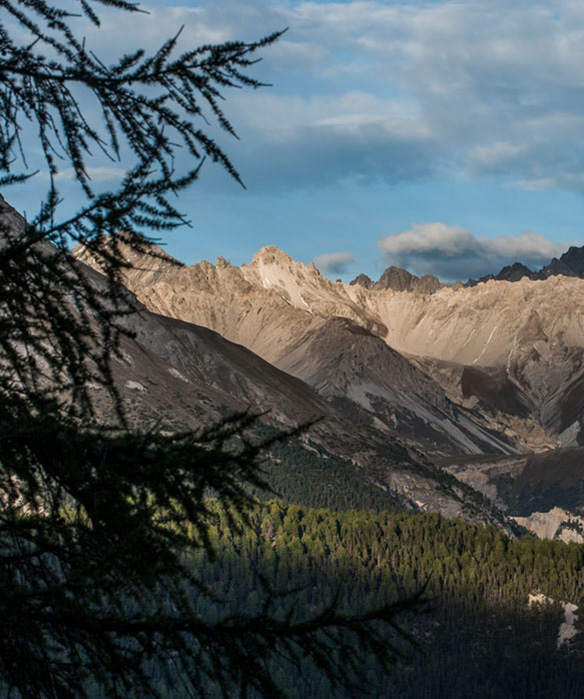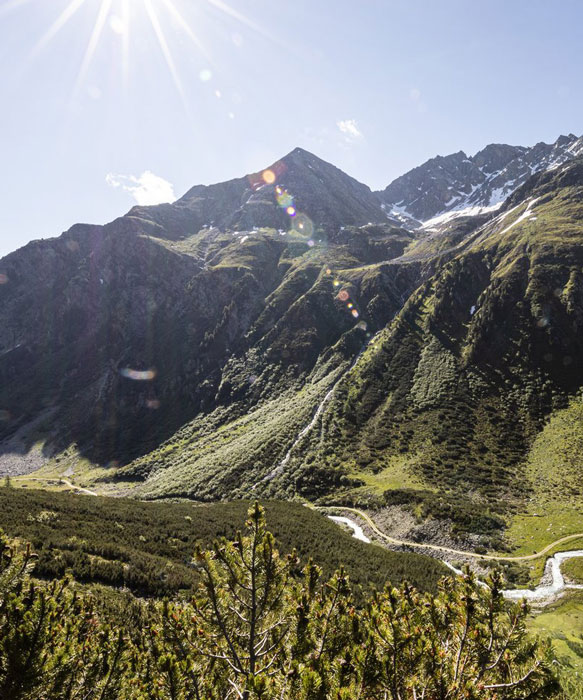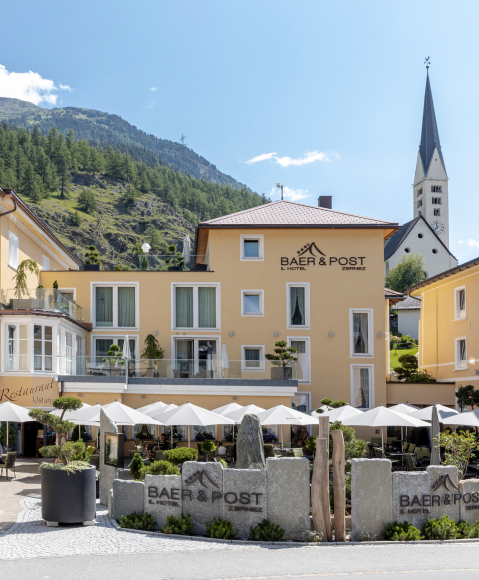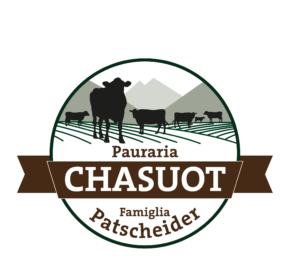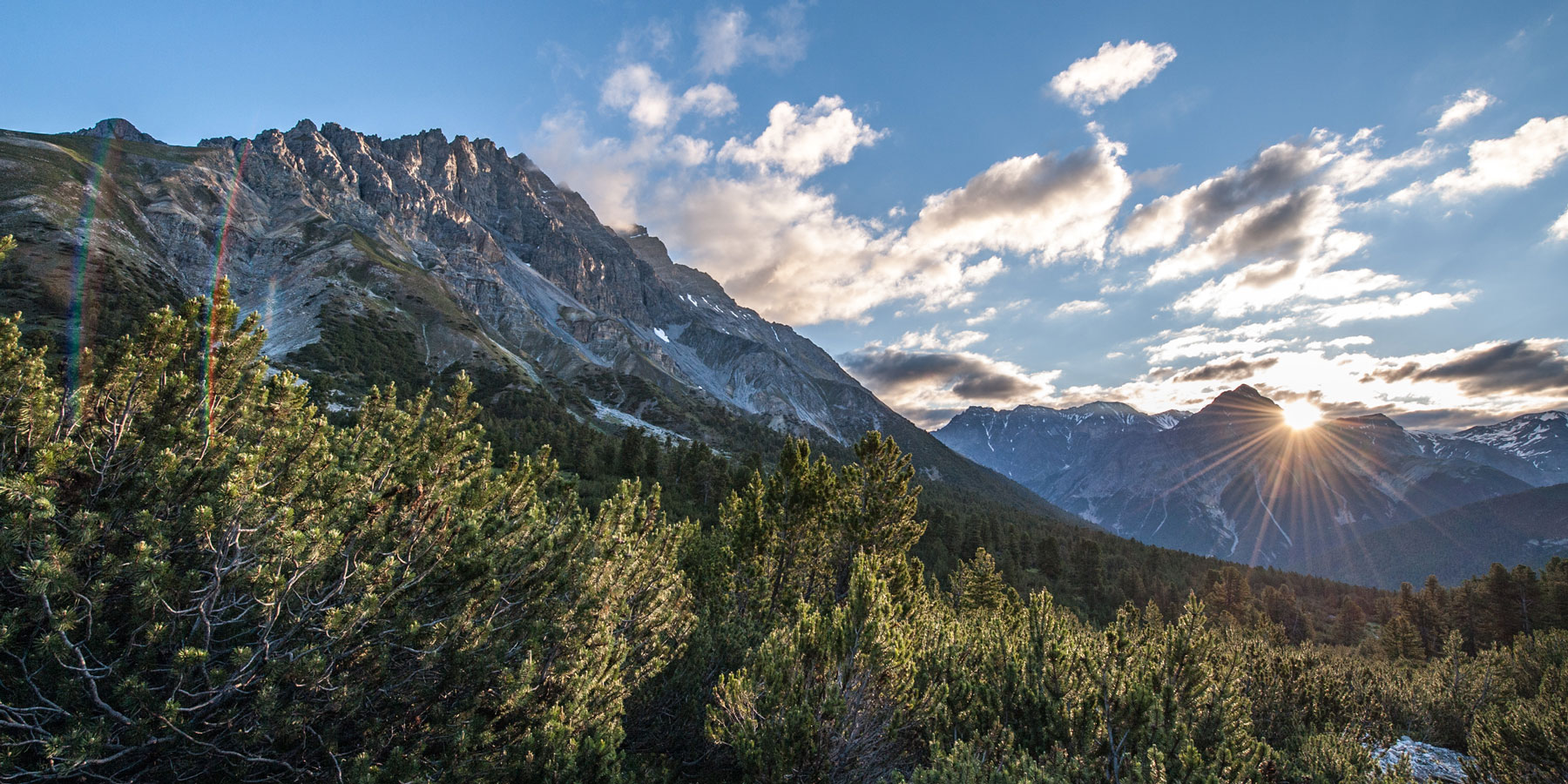
Parc Naziunal Svizzer
Swiss National Park
untouched nature
Welcome to a place where you can experience nature, where no two vacation days are the same.
Here, the world is still as it was in our grandparents’ time. The Swiss National Park was founded in 1914 by a few visionaries, which makes it the oldest national park in the Alps. It is home to almost 5000 animal species and 600 different flowering plants.
170 km2 of untouched nature, a piece of primal wilderness
Hiking in the Swiss National Park
The strictly protected wilderness of the national park offers animals and plants the opportunity to flourish in their natural habitat, without any human influence.
21 routes with a total length of 80 km lead you through untouched nature, many of them even taking you above the tree line. The right equipment is essential for an unforgettable day in the national park. Good hiking boots with a non-slip sole are a basic requirement, and you should always have sun and rain protection with you. Take plenty of snacks with you, as there are only a few places to stop for refreshments in the park itself (Chamanna Cluozza, Il Fuorn, Hotel Parc Naziunal).
To protect nature, open fires are absolutely forbidden, both in the park and in the parking lots. Dogs are not permitted in the Swiss National Park, not even on a leash or in a backpack.
Would you like a professional guide for your hikes? Then we recommend our local hiking guides. They know the park like the back of their hand and will take you on a journey of discovery on the guided tours.
To observe wild animals such as deer, chamois and ibex on your hikes, you can rent binoculars at the National Park House.
Please inform yourself in advance about the rules in the Swiss National Park.
The journey by post bus from Zernez to the Ofen Pass is free of charge with the guest card.
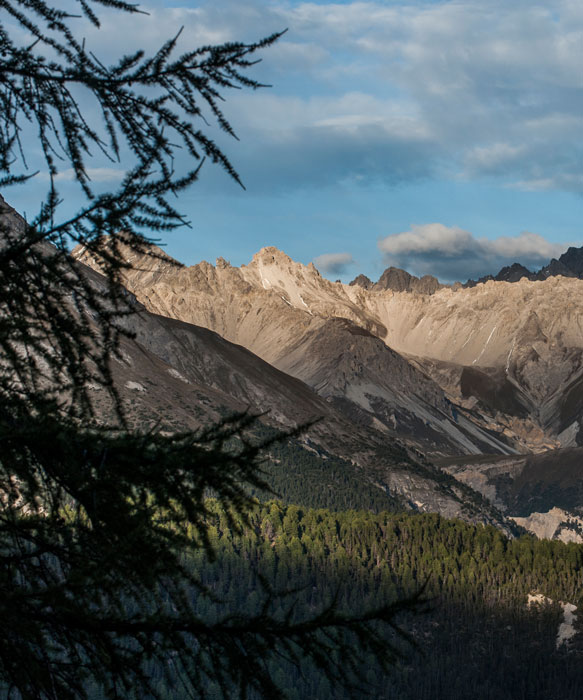
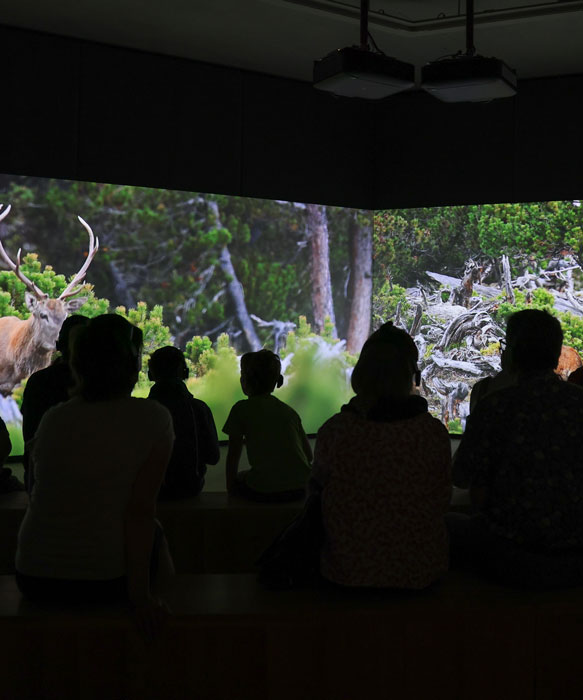
Everything about the National Park
The National Park Center in Zernez is the gateway to the fascinating secrets of the Swiss National Park. The modern visitor center invites you to immerse yourself in the history of the oldest Alpine national park. Through informative exhibitions, interactive displays and lively presentations, visitors not only learn interesting facts about the unique flora and fauna, but also about the development of nature protection in this impressive region.

